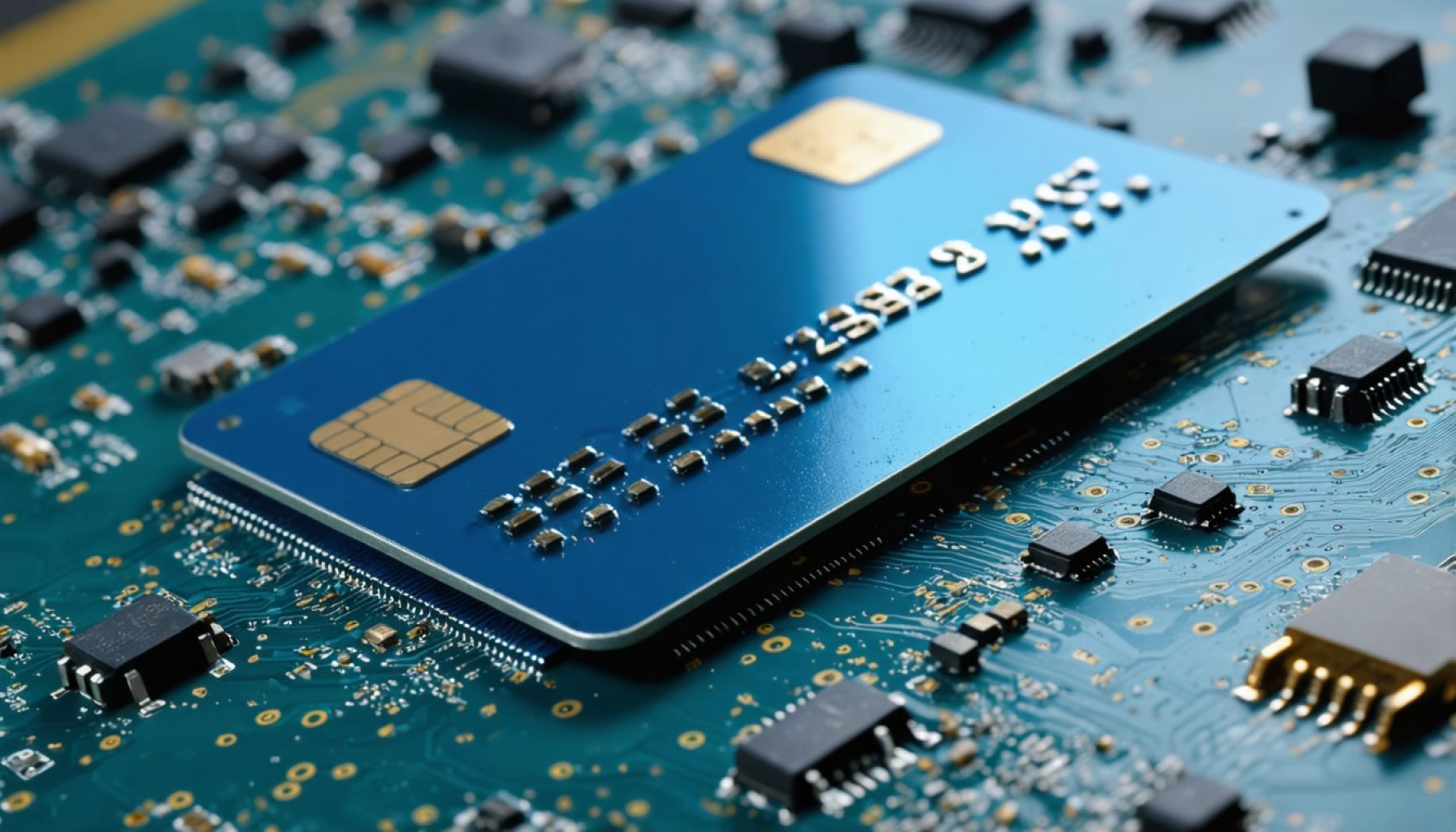- The global Smart Card IC market is projected to reach $5.8 billion by 2034, with a robust annual growth rate of 6.9%.
- Smart card ICs enhance secure digital transactions, with applications ranging from contactless payments to e-passports.
- Key players like Infineon Technologies, NXP Semiconductors, Samsung, and Renesas are driving innovation and growth in the market.
- The convergence of declining production costs and the move towards digitized economies boosts demand for smart card technology.
- Data security threats and compatibility issues present notable challenges for the industry.
- Asia-Pacific is a significant growth area due to strong digital solution demand and expansive marketplaces.
- Smart card ICs promise a secure, efficient future, seamlessly integrating technology into everyday life.
Brimming with possibilities, the global Smart Card IC market stands poised to redefine secure digital transactions, promising a vigorous rise to $5.8 billion by 2034. With a compelling annual growth rate of 6.9%, this burgeoning industry unveils a future where our daily interactions—be it at cash registers or border crossings—are securely streamlined by the invisible power of smart card technology.
Picture the seamless transaction: a mere tap of a card to a terminal, and voilà, the payment is complete. This is not just a convenience but a promise of security, an ever-pressing concern in our digital age. The increasing ubiquity of contactless payments beckons a shift towards smart card ICs, driven by their inherent capability to offer speedy, versatile, and secure interactions. The convergence of declining production costs and the relentless march towards digitized economies lays fertile ground for the smart card IC revolution.
At the heart of this technology lies the integrated circuit chip, the brain of the operation, ensuring that every swipe and tap is not just fast but secure. Companies like Infineon Technologies and NXP Semiconductors lead the charge from their innovation hubs in Europe, while tech giants such as Samsung in South Korea and Renesas Technology in Japan amplify the global symphony of progress. Yet, as the industry flourishes, it does not escape the shadows of challenges—data security threats loom large and compatibility issues arise as different platforms vie for dominance.
Smart card ICs find versatile applications, embracing everything from cashless vending in bustling urban centers to e-passports at international terminals. They permeate diverse industries, embedding themselves in the precision-driven realm of healthcare and the rapidly evolving telecommunication landscape. The multifaceted nature of smart cards underscores their growing importance, promising not just ease and speed but a reliable fortress for sensitive data.
Regions like Asia-Pacific emerge as dynamic arenas of growth, fueled by an insatiable appetite for digital solutions and vast, interconnected marketplaces. As urban centers morph into smart cities, the demand for efficient and secure transaction methods—embodied by smart cards—propels the industry’s upward trajectory.
In a world constantly yearning for speed and security, the smart card IC market doesn’t merely suggest a solution; it heralds a new era where technology intimately melds with daily life. The essential takeaway for industry stakeholders is clear: adaptability and innovation are the tickets to ride this wave of transformation.
A secure, efficient future beckons through the lenses of microchips, promising an era where technology and trust walk hand in hand—an era that is closer than we might think.
Unlocking the Future: How Smart Card ICs are Poised to Revolutionize Secure Transactions
Exploring the Smart Card IC Market
The global Smart Card IC market is on the cusp of a transformative journey, set to achieve a remarkable valuation of $5.8 billion by 2034. With a projected annual growth rate of 6.9%, the industry is primed to redefine how we perceive secure digital transactions. This article delves deeper into the facets of smart card ICs that weren’t thoroughly covered, providing insights and practical tips for stakeholders.
How Smart Card ICs Work
Central to smart card technology is the integrated circuit chip, which serves as the secure brain of the card. It handles secure transactions, running cryptographic algorithms to protect data. Infineon Technologies, NXP Semiconductors, Samsung, and Renesas Technology are spearheading innovation in this field.
Market Trends and Forecasts
– Asia-Pacific Growth: The Asia-Pacific region is expected to lead in market growth due to its rapid digitalization and burgeoning smart city projects.
– Contactless Payment Surge: The popularity of contactless payments is a significant driver of the smart card IC market, favoring cards with efficient, fast, and secure transaction capabilities.
Applications of Smart Card ICs
– Cashless Vending and Retail: Utilized in retail and vending machines, smart card ICs offer a seamless and secure way to handle transactions.
– E-Passports: E-passports use smart card technology to enhance security for international travelers.
– Telecommunications and Healthcare: The precision and security offered by smart cards make them vital in telecommunications and healthcare environments.
Addressing Challenges
While smart card IC technology is promising, it faces challenges such as data security threats and compatibility issues. These must be addressed through industry standards and collaborative platforms to ensure interoperability.
Pros and Cons Overview
Pros:
– Enhanced security for transactions
– Swift and seamless user experience
– Broad application across industries
Cons:
– Potential security vulnerabilities if not properly managed
– Compatibility issues between different systems
– Initial costs for implementation
Actionable Recommendations
1. Embrace Innovation: Stay updated with the latest in smart card IC technology to maintain competitive advantage.
2. Focus on Security: Ensure robust encryption and up-to-date security measures to protect against evolving threats.
3. Promote Interoperability: Work towards standardizing technologies for smoother cross-platform integration.
Final Insights
As smart cities become more prevalent, the smart card IC market will continue to grow, driven by the need for secure and convenient digital transaction methods. By addressing security and interoperability challenges, the industry can secure a strong foundation for future success.
Discover more about the digital transformation trend with industry insights from Gartner.
Quick Tips
– For businesses, investing in smart card technology can offer both immediate and long-term benefits, enhancing customer trust and operational efficiency.
– Consumers should look for financial solutions that integrate smart card technology to ensure their transactions are secure.
Smart card IC technology is not merely an incremental improvement; it’s a pivotal change towards a digital-first world where security meets convenience.







